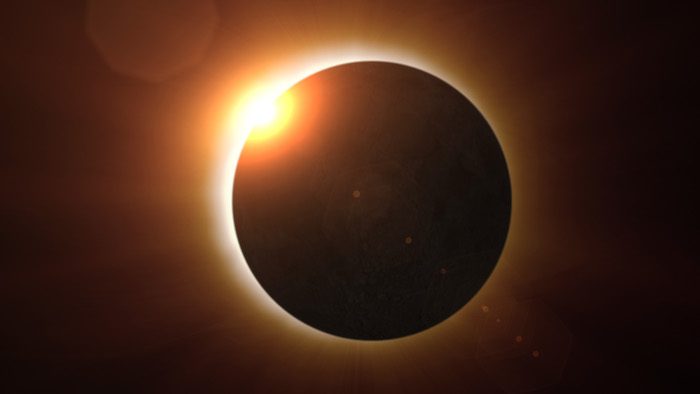On April 8th, 2024, a total solar eclipse will sweep across North America, from Mexico to the Maine-Canadian border. For those who experienced the spectacular solar eclipse of 2017, this one will be similar, crossing the United States from west to east and passing...
The upcoming election got me thinking about the mathematics of the electoral college. Five times in American history, including twice in our still young 21st century, the person who received the most votes didn’t win the most electoral college votes or go on to become president of the United States. That fact was enough for me to understand that the electoral college vote doesn’t always reflect the will of the people. But then I kept thinking: if the electoral college doesn’t represent our popular vote, how else is it misrepresenting the American people?
I started by researching how the electoral college came to be. According to National Geographic, the electoral college arose as a compromise among three groups:
- Those who believed the people should directly vote for their president
- Those who thought only the Congress should have that power
- Those who believed slave-owning states of the south deserved greater influence than their population could provide, since the south was more sparsely populated than the north.
The Founding Fathers ultimately implemented the electoral college system, which would apportion votes by congressional delegation: they’d give states a number of electoral votes equaling the number of Congresspeople who represented them, plus one vote for each of their two senators. Since states are apportioned a number of representatives in the House based on their population, this method would give each state a vote total that was roughly proportional to their population. But the smaller, southern states got an additional boost from the extra two electoral votes every state received, no matter how small they were.
The slave-owning states were given an additional advantage that was written right into the Constitution: the notorious Three-Fifths rule. This rule let states count their slaves towards their population (three fifths-worth) for the sake of taxation and congressional representation (and therefore their electoral college representation), without giving them the right to vote or benefit from those taxes.
So, given that slave owners had such a major influence on how votes are counted in this country, I decided to take a look at whether centuries of civil rights legislation has leveled the playing field (giving the US the benefit of the doubt), or whether we can still find disparities in minority representation in the electoral college today.
I first looked at the racial makeup of the small states that only have three electoral votes: the ones that are so small that they only have one representative in Congress and benefit most from the “boost” they get from the electoral college counting their senators. For the 2020 presidential election, there are seven of those (Montana*, Delaware, South Dakota, North Dakota, Alaska, Vermont, and Wyoming), plus Washington, DC (thanks to the 23rd Amendment).
According to a 2019 estimate, based on the Kaiser Family Foundation’s analysis of the Census Bureau’s American Community Survey, about 11 percent of Americans identify as black or African American. But, within these seven small states and DC, the African American population is about nine percent, or two percent less than the national percentage. According to the same population estimate, those who identify as Hispanic make up about 12 percent of the US population, but in those seven states plus DC, they only make up about 6 of the population. Conversely, people who identify as non-hispanic white make up about 60 percent of this country, while the percentage of white residents of the seven smallest states and DC is about 74 percent** (See Figure 1).
This means that the states that are overrepresented in the electoral college have a disproportionately high white population.
“Small States” = the states that have been allotted three electoral votes, the minimum (Montana, Delaware, South Dakota, North Dakota, Alaska, Vermont, and Wyoming + Washington, DC).
The states we’ve been focusing on are not the only ones that are overrepresented in the electoral college. In fact, as a state gets bigger, its representation, as a proportion of its population, goes down gradually. This is partially because the portion of the electoral vote that’s based on population starts to dilute the “boost” that the senator count provides. It’s also because Congress put a limit on its size in 1929. The US population in 1929 was about 122 million people, but now, it’s about 328 million and our number of congresspeople has not changed. As a result, states that have exploded in size since the early 20th century have not been able to increase the size of their congressional delegation, and therefore their electoral vote count, as much as they could have if they didn’t have to share their apportionment with other states.
Consequently, as a proportion of its population, Texas has the least influence on the electoral college result; in fact, Texas receives only 80% of the votes it should receive, if all states were treated equally. Meanwhile, our smallest state, Wyoming, gets more than three times the vote it should receive (Figure 2).
This shows us if each state is getting its fair share of electoral votes based on its population.
Does the demographic pattern hold in the bigger states? If the small states, which have disproportionately greater influence on the results of our presidential elections, are disproportionately non-hispanic white, does that mean the large states, which are underrepresented in the electoral college, are disproportionately black and brown?
The trend holds. Among the eight largest states (Georgia, Michigan, Ohio, Pennsylvania, Illinois, Florida, New York, Texas, and California), the Hispanic population is a whopping 25%! Compared to Wyoming, which is 84% non-Hispanic white, Texas is only 41% non-Hispanic white.
What does all of this mean? Overall, white people are overrepresented in the electoral college by two percent, while black Americans are underrepresented by two percent and Hispanic Americans by seven percent. So while the three-fifths rule is fortunately no longer the law, minorities, especially Hispanic individuals are still at a disadvantage: According to the electoral college, a black person is only worth 95% of a non-Hispanic white person, while a Hispanic person is worth only nine tenths of a non-hispanic white person (See Figure 3).
This graph is showing how racial/ethnic minorities fare against white residents of the US, in terms of to what degree they get their fair share of the electoral vote. (Equation = ([racial/ethnic group] electoral vote share/[racial/ethnic group] population share)/(non-Hispanic white electoral share/non-Hispanic white population share)
There’s one more factor that expands minorities’ electoral college disadvantage even more: their undercount in the census.
Every ten years (including in 2020), by Constitutional mandate, the US counts every person living in the United States and collects some basic demographic information. These data help Congress divide up tax dollars, direct government resources where they are most needed, and importantly, decide where and how many congressional districts a state should have. But for various reasons, racial and ethnic minorities are often undercounted relative to white people.
The US Census Bureau estimated that in 2010, they undercounted African Americans by a little more than two percent. That’s about 84,000 black Americans not counted. The white population, on the other hand, was overcounted by nearly one percent, which equates to about 1.6 million white people counted who don’t exist (See Figure 4).
In the 2010 census (like in previous censuses), non-Hispanic white people were overcounted, while black and Hispanic individuals were undercounted.
This puts the larger states we talked about earlier at an even greater disadvantage. Since these states have higher minority populations, a higher proportion of their overall population is not getting counted, and therefore, they’re not getting as much congressional representation as they should.
If you have a problem with that, then you have another reason to support the abolishment of the electoral college. You can start by calling your Congressperson and asking them to support legislation that amends the Constitution to allow US citizens to choose the President of the United States of America by popular vote. Find your congressperson and how to contact them here.
*According to the US Census mid-2019 estimate, Montana has a larger population than Rhode Island, but Rhode island has four electoral votes, while Montana only has three. Yet another example of how our leaders bungled the apportionment of electoral votes in the US.
**If you take out DC, a demographic outlier because of its large African American population (45 percent), the disparity is even starker: over 78 percent of residents are white, while the black population is under 4 percent.





